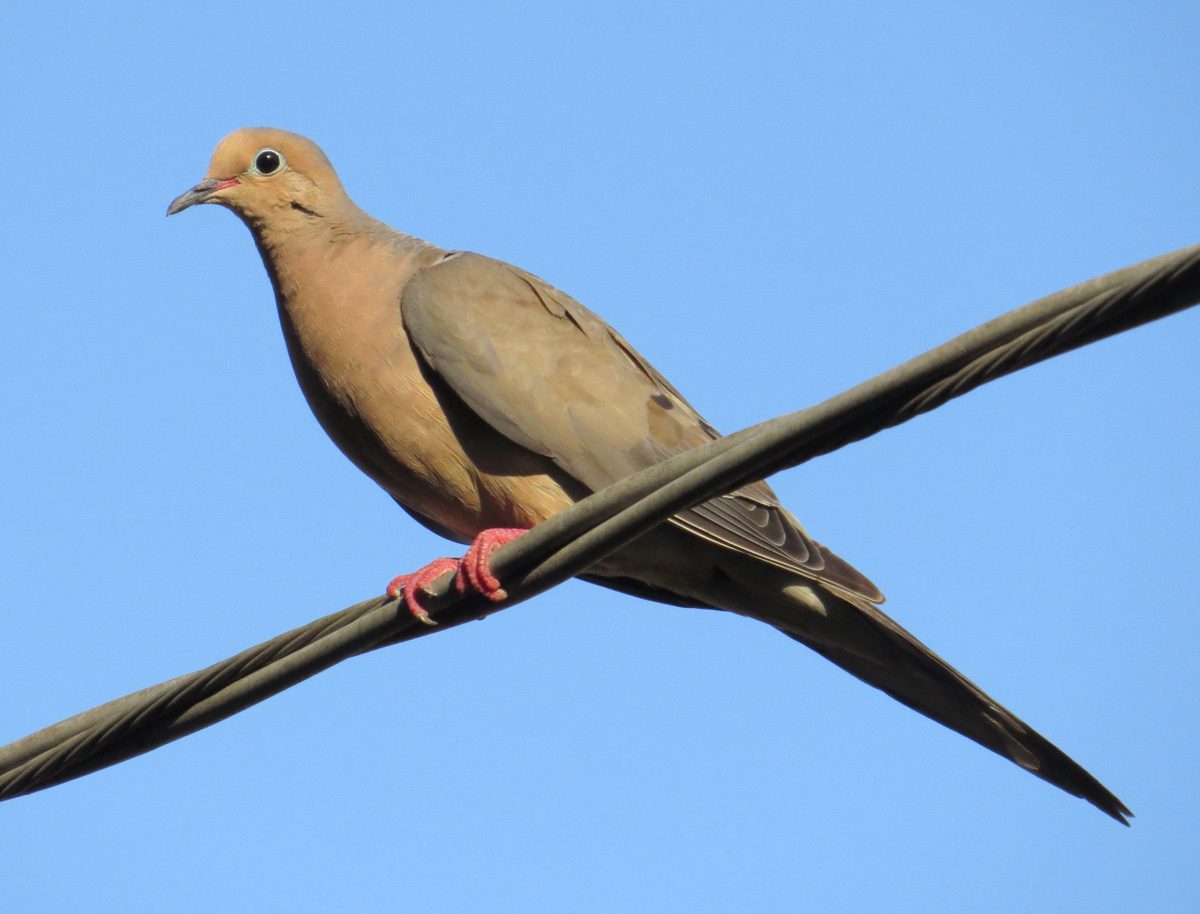I often see birds on telephone wires while I’m driving—how do I figure out what they are from such a short glimpse?


Quickly identifying a mystery bird requires a familiarity with size & shape, color pattern, behavior and habitat. These are the basic four keys of bird identification, and they can make it possible to identify a bird with just the briefest of sightings. We’ve got several ways to help you practice:
- Visit our Building Skills pages for a step by step introduction to each of the four keys of identification.
- Watch our free Inside Birding videos and let expert birders Chris Wood and Jessie Barry demonstrate the finer points of the four keys for you.
- Check out our Merlin Bird ID app, a helpful tool to identify birds while on the go.
- It also helps to keep a running list in your head of which birds are most likely in your location and time of year. Our eBird project is great for that—use the Bar Charts function or explore recent sightings using the maps–and check out other tools, like exploring hotspots near you.
- If you want to delve deeper, check out our affordable Bird Academy courses, filled with info, tips, and interactive quizzes and games.
Now: how do you put your knowledge into practice? Let’s imagine it’s early October, and you are on the road somewhere outside Chicago. From the passenger’s seat you see a bird perched on a telephone wire. You note: Robin-sized, buffy color, long tail, round body, small head. Your curiosity is piqued, but the moment has passed.


First, let’s assemble that running list of birds likely to be on a telephone wire in the Midwest: American Kestrel, European Starling, Mourning Dove, Rock Pigeon, Eastern Bluebird, American Robin, Red-winged Blackbird, House Finch, various swallows…. these are the usual suspects.
Based on the size we can eliminate the larger pigeon, and the smaller House Finch and swallows. The long tail rules out starling, bluebird and robin. The color is wrong for a blackbird. That leaves American Kestrel and Mourning Dove. You noted the body was round and the head small (like a dove) rather than slender and blocky headed (like a falcon). Though you may not be able to be 100 percent certain, Mourning Dove is looking more and more likely.
The reality is, when identifying a bird from a moving vehicle you may never be 100% certain what you are looking at. And please remember to do your road birding from the passenger’s seat, letting the driver concentrate on the road. By applying these basic identification skills you can make a very well-educated guess. Good luck!


All About Birds is a free resource
Available for everyone,
funded by donors like you


